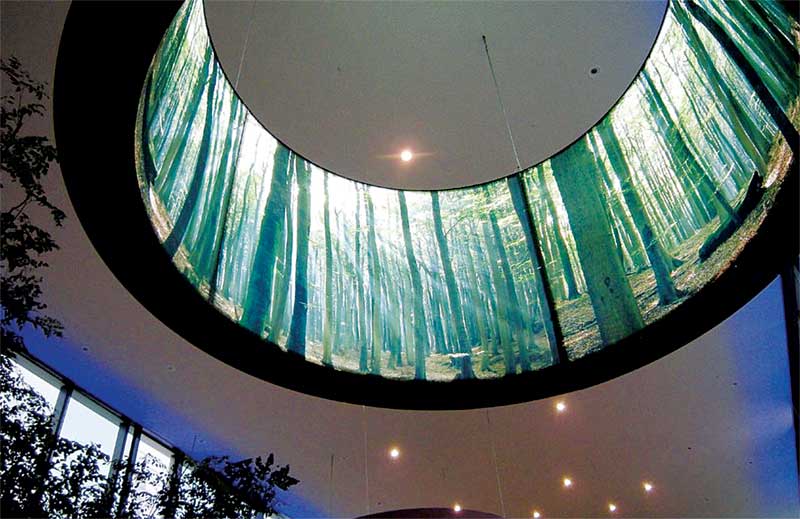Silicone-edge graphics
Tension fabrics offer the necessary flexibility for sewing silicone-edge graphics (SEGs), which have become more common as equipment has improved and the market has grown.
An SEG is created by printing the fabric, sewing a thin silicone strip or gasket around its edges and then inserting the finished edges into a recessed groove all around the perimeter of a frame. This results in a ‘frameless’ edge-to-edge appearance.
Precise measurements are necessary for applying silicone edges to fabrics. If possible, it is best for the PSP to use a frame in-house, rather than outsource the process, as then a good, tight fit can be ensured in terms of both width and length.
The dimensional stretchability of the fabric is a key factor for success. There should be just enough ‘give’ in the material to allow the edge to be snapped into the frame. Too much stretch, on the other hand, can prevent the graphic from fitting properly, such that it sags and bunches along the edges and corners of the frame.
Colour profiling
Since all fabrics are not created equal, it is essential to profile them properly for full-colour inkjet printing. Differences in white point from fabric to fabric—and even from batch to batch—will affect how printed, finished images appear. There can also be significant variances between coated and uncoated fabrics.
For rich, dark colours and brilliant, bright hues, it is best to use inks with a high density of colourants. This is especially true with dye sublimation, whether direct or via heat transfer.
Speaking of which, direct-disperse dye sublimation offers some of the best results on properly coated fabrics, due to the saturation of the inks into both the coatings and the fabric fibres. It is also important to understand how the type of frame and backlighting will affect the graphic’s appearance. Perimeter lighting is often the best choice for uniform illumination.
Indeed, printing systems, inks and finishing equipment all need to be colour-managed, so as to perform well together as a unit and produce superior fabric graphics.
Mike Compton is product marketing manager for Top Value Fabrics (TVF), which supplies textiles to the wide-format printing sector. This article is based on a seminar he presented in October at the 2017 Specialty Graphic Imaging Association (SGIA) Expo in New Orleans, La. For more information, visit www.tvfmedia.com and www.sgia.org.







